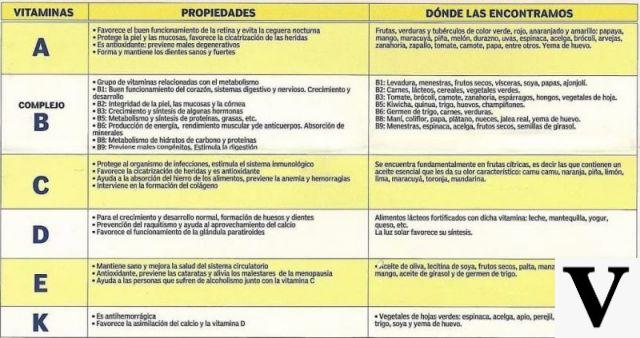Back to reading ...
Vitamin D supplements
Need
Daily requirement of vitamin D
The daily requirement for vitamin D is expressed in terms of Adequate Intake (AI), rather than the RDA.
The Recommended Daily Allowance (RDA) indicates the level of average daily intake sufficient to cover the needs of almost all (97-98%) of the population. For some nutrients, however, it is not possible to establish exactly this value; this is the case, for example, of vitamin D, where dietary requirements are closely linked to the degree of sun exposure. For this and other nutrients the so-called AI are therefore established, i.e. adequate levels of intake, which in the case of vitamin D are considered sufficient to maintain bone health and normal blood calcium balances (calcemia), even in the absence of sun exposure. :
| Age | Kids | Men | Women | Pregnancy | Lactation |
| From birth to 13 years | 5 mcg (200 IU) | ||||
| 14 18-years | 5 mcg (200 IU) |
5 mcg (200 IU) |
5 mcg (200 IU) |
5 mcg (200 IU) |
|
| 19 50-years | 5 mcg (200 IU) |
5 mcg (200 IU) |
5 mcg (200 IU) |
5 mcg (200 IU) |
|
| 51 70-years | 10 mcg (200 IU) |
10 mcg (200 IU) 10 mcg (200 IU) |
|||
| +71 years | 15 mcg (600 IU) |
15 mcg (600 IU) |
|||
| Where 40 IU (international unit) equals 1 mcg | |||||
Overdose and Toxicity
Risks of toxicity from overdose
As with all fat-soluble vitamins, there is also a real risk of overdose toxicity for vitamin D. This occurs with rather nonspecific symptoms, such as nausea, vomiting, lack of appetite, constipation, weakness and weight loss; in the most serious cases a condition of hypercalcemia is established such that the patient can suffer from psychological disorders (depression, confusional state, apathy, lethargy up to coma) and cardiac arrhythmias. High doses of vitamin D, especially in combination with calcium supplements, increase the risk of developing kidney stones, while high intakes for long periods of time can lead to calcification of soft tissues (such as kidneys or tendons).
The risk of vitamin D intoxication due to excessive sun exposure does not exist, just as the danger of food poisoning is remote (unless large doses of cod liver oil are regularly consumed). More likely, however, to run into toxicity problems resulting from an exaggerated consumption of food supplements.
For vitamin D a UL (Upper Limit intake) has been set equal to:
| Age | Kids | Men | Women | Pregnancy | Lactation |
| 0-12 months | 25 mcg (1,000 IU) | ||||
| 1 13-years | 50 mcg (1,000 IU) | ||||
| 14+ years | 50 mcg (2,000 IU) |
50 mcg (2,000 IU) |
50 mcg (2,000 IU) |
50 mcg (2,000 IU) |
The values shown in the table (UL) represent the maximum intake limits which presumably do not give any danger of toxicity to healthy people. Therefore, the chronic exceeding of these limits significantly increases the risk of side effects from overdose; the adjective chronic is important, since occasional ingestions of even considerably higher doses do not cause acute toxicity phenomena.
dosage
Dosage of intake
First of all, respect the instructions on the package insert, on the supplement label and do not exceed the recommended doses. Discuss in advance with your doctor or pharmacist the advisability of taking vitamin D supplements, in what doses and for how long. In the prevention and treatment of osteoporosis, a regular supplement of 400/800 IU of vitamin D3 and 600/1200 mg of calcium per day is generally prescribed.
Conditions such as kidney stones, hyperparathyroidism, and concomitant therapy with antacids, digoxin, or tetracycline antibiotics (tetracycline, demeclocycline, doxycycline, minocycline or oxytetracycline), may make vitamin D supplements contraindicated or require dose adjustment.


























